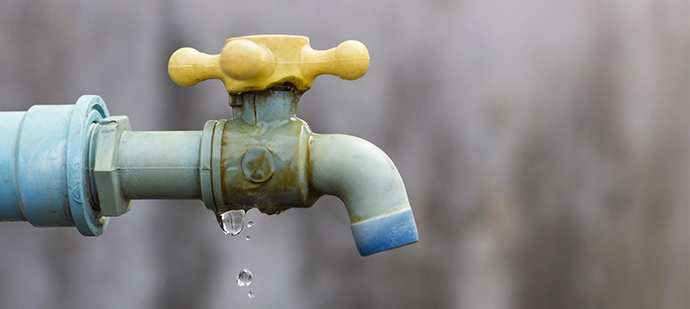How to Inspect If Your Residence Has a Covert Leakage
How to Inspect If Your Residence Has a Covert Leakage
Blog Article
Just about everyone has their unique way of thinking on the subject of Detecting hidden plumbing leaks.

Early discovery of dripping water lines can alleviate a possible calamity. In addition to saving you cash, it will certainly decrease the worry and also disappointment. The moment you find a leak, calling your plumber for repairs is the best solution. Nonetheless, some little water leakages may not be visible. If you can not identify it with your nude eyes, right here are some hacks that help.
1. Analyze the Water Meter
Checking it is a guaranteed means that assists you uncover leakages. If it moves, that shows a fast-moving leak. This indicates you might have a slow leakage that can even be below ground.
2. Examine Water Consumption
Examine your water bills as well as track your water usage. As the one paying it, you need to discover if there are any type of discrepancies. If you find sudden changes, regardless of your intake being the same, it indicates that you have leakages in your plumbing system. Remember, your water expense must drop under the same array every month. An unexpected spike in your expense shows a fast-moving leakage.
At the same time, a steady increase monthly, despite the very same behaviors, reveals you have a slow-moving leakage that's additionally gradually escalating. Call a plumber to extensively examine your property, especially if you feel a cozy location on your flooring with piping beneath.
3. Do a Food Coloring Examination
When it comes to water usage, 30% comes from commodes. If the color in some way infiltrates your dish throughout that time without flushing, there's a leak in between the container as well as dish.
4. Asses Outside Lines
Do not forget to inspect your exterior water lines too. Should water permeate out of the link, you have a loose rubber gasket. One small leakage can squander bunches of water and also surge your water costs.
5. Examine as well as Evaluate the Scenario
Home owners must make it a habit to check under the sink counters and even inside cupboards for any bad odor or mold and mildew growth. These two red flags suggest a leakage so punctual interest is required. Doing routine examinations, even bi-annually, can save you from a major trouble.
Check for stainings as well as deteriorating as most home appliances as well as pipelines have a life span. If you believe leaking water lines in your plumbing system, don't wait for it to escalate.
Early discovery of dripping water lines can alleviate a possible catastrophe. Some small water leaks might not be noticeable. Checking it is a guaranteed means that aids you uncover leaks. One little leak can squander heaps of water and surge your water costs.
If you think leaking water lines in your plumbing system, don't wait for it to escalate.
How to Know If Your Home Has a Hidden Leak
Water Meter Reveals Inexplicable Water Usage
If you’d like to test whether or not there’s a leak somewhere in your home, you can do this using your water meter. Here is how to conduct the test:
Don’t use any water in your home for at least 30 minutes; this also means not turning on faucets or water-using appliances.
Go outside, and check your water meter for activity.
If your water meter shows that there was activity, even though no one was using any water, this proves that there is a leak in your home.Visible Mold or Mildew Growth
Leaks behind walls create moist, dark environments that allow mold and mildew to grow and thrive. Eventually, you might see mold growth forming on the wall closest to a hidden leak.
If mold is growing in an area that receives a high amount of moisture, such as a bathroom, it may simply be an indication that better ventilation is needed. However, if you see mold growth on a wall or the ceiling in an area where you would not expect, you probably have a hidden leak.
Musty, Mildew Odor
Sometimes you might not be able to see the mold or mildew that is growing as a result of a leak. However, the smell can give the problem away just as easily. If you catch a whiff of something musty, there’s a good chance that old water is collecting somewhere in your home that you can’t see.
Stained/Warped Walls, Ceilings, or Floors
When your home soaks up water, a variety of red flags can become visible, including ceiling stains, bubbling drywall, warped walls, and sagging floors. While these issues can be caused by excess humidity, they can also be signs that a pipe or plumbing connection has started leaking behind your walls.
Inexplicably High Water Bill
After a while, you get a general sense for what your water bill should be. If you own a pool or sprinkler system, your bill will tend to be higher during summer. However, if you receive a water bill that seems especially high, and you can’t figure out what caused it, then you may have a hidden leak somewhere that’s increasing your bill.
https://www.plumbingjoint.com/blog/2019/july/how-to-know-if-your-home-has-a-hidden-leak/

I have been very interested by Hacks to detect leaks and I am praying you enjoyed reading our article. Appreciated our write-up? Please share it. Let others find it. Thanks so much for taking the time to read it.
Report this page